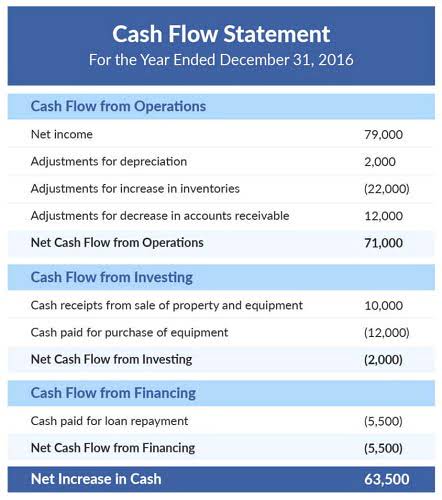
These are based on current operating conditions, reflecting the latest data on costs, processes, and efficiencies. It is useful for short-term planning and performance evaluation as they provide a basis for comparison with actual performance under current conditions. Although it may appear that a standard cost system requires more extensive documentation during the accounting period than an actual cost system, the opposite is really standard costing system true.
Direct materials quantity variance

To provide a realistic and achievable benchmark that employees can strive for. It is commonly used in practice as they balance motivation with realism, encouraging continuous improvement without setting unattainable goals. Establishing and maintaining standard costs can be a resource-intensive process. It requires detailed analysis and regular updates to ensure accuracy. This ongoing need for evaluation and adjustment can be time-consuming and costly, diverting resources from other critical business activities. Even in jobbing industries where jobs vary significantly, there is a considerable possibility of implementing this costing system.
- This plan provides the same information as is provided by the single plan.
- The quantum of work done in one hour is known as ‘standard hour’.
- It provides a basis for gauging and holding costs in manufacturing and service firms.
- Investors, banks and other moneylenders have a stake in the success of the business concern and, therefore, are benefited immediately by installation of an efficient costing system.
- When standards are properlyset, their achievement represents a reasonably efficient level ofperformance.
Total variable manufacturing overhead variance

Relying only on the actual cost of manufacturing makes it difficult to maintain the financial records of the company. Standard costing simplifies this process and makes it easy to calculate and maintain records. When a company has accurate estimated costs, it can focus on other activities like borrowing and overdrafts. These standards are set based on efficient operating conditions but allow for normal levels of waste, downtime, and other operational inefficiencies.
Reasons for Growing Importance of Overheads

Follow Khatabook for the latest updates, news blogs, and articles related to micro, small and medium businesses (MSMEs), business tips, income tax, GST, salary, and accounting. The standard cost formula has been stated below for better understanding of the topic. The three main elements of standard cost are Direct Material Cost, Direct Labor Cost and Overheads. A toning up of the variance trial balance analysis system can obviate this difficulty. Due to play of random factors variances cannot sometimes be properly explained and at times it is difficult to make a distinction between controllable and non- controllable variances.

The effectiveness of standard costing depends upon the standards set. As such, standards should be realistic and capable of attainment. The standard costs are organised to uncover and report off-standard conditions. The management should strive for the attainment of standard costs because they are attainable ideal costs and are practical from the point of view Insurance Accounting of business.
- Supervisor and managers show a keen interest in the accomplishment of standards because they know that their performance would be evaluated with reference to the established standards.
- Actual performance is compared with expectations or established standards.
- Determination of the type of standard to be used is one of the basic requirements for introducing standard costing.
- The predetermined costs based on technical estimate of material, labour and overhead for a selected period of time and for a prescribed set of working conditions.
- Companies typically establish a standard fixed manufacturing overhead rate prior to the start of the year and then use that rate for the entire year.
- “Standard” has been defined in the accounting literature, as “a yardstick”, “a benchmark”, “a gauge”, and “a sea level from which to measure altitudes”.
- Using tools like HAL ERP can help automate the process, making it easier to track costs, manage variances, and maintain control over your finances.
Total direct labor variance
Standard costing gives the managers and directors comparative information about the internal costs of different departments. Practical standards are strictbut attainable standards that have allowances made for machineryproblems and rest periods for workers. Companies can meet thesestandards if average workers are efficient at their work. In developing standards, managementmust consider the assumed conditions under which these standardscan be met.

Classification and Codifications of Accounts:
- It is equally necessary to have a thorough knowledge of material specifications, material and labour price projections, and work study and work measurement.
- This is due to variation in the price of raw materials, production delays, changes in salaries/ wages, etc.
- Generally, management does not useideal standards because ideal standards do not allow for normalrepairs to machinery or rest periods for workers.
- If the latter were used inefficiencies in the form of excess costs might be passed on from one division to another division.
Greater accuracy – The cost of new products can be estimated with greater accuracy. Work motivation – The standards provide incentive and motivation to work with greater effort and care for achieving the standard. (7) Besides those mentioned above, the duration for which the standards are to be used should also be determined in advance.
- This method will always update to reflect on current business operations.
- Owing to the normal work conditions, the employees feel motivated to attain the goal.
- Consistent cost standards provide valuable insights into cost behavior and profitability, aiding better business decisions related to pricing strategies, production, and resource allocation.
- The inflationary tendency in the economy will cause fall in purchasing power of money thereby affects the accounting for real value.
- You might view this account as containing the cost of the products in the finished goods warehouse.
- In practice, the terms ‘costing’ and ‘cost accounting’ are used interchangeably.
- Though not perfect, established standards set the acceptable amount of cost to be spent.
The primary goal of standard costing is to control costs and improve financial performance. It applies to both Cost of Goods Sold (COGS) and inventory valuation, giving businesses a clearer picture of financial health. The amount by which actual costs exceed the standard costs or budgeted costs. Also, the amount by which actual revenues are less than the budgeted revenues. Let’s assume that the Direct Materials Usage Variance account has a debit balance of $2,000 at the end of the accounting year. A debit balance is an unfavorable balance resulting from more direct materials being used than the standard amount allowed for the good output.
Leave a Reply